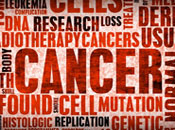
Breakthrough technologies can hold the most undiscovered money-making potential.
Because most people just don't understand how they work, before it's too late and they're using it themselves—wondering how they ever lived without it.
The trick is to use history as a guide to predict the future, and pick up on developing discoveries before they come to market.
Science is full of examples of serendipity leading to discovery. Some of them are the stuff of legend.
Archimedes realized that the volume of an irregular object could be calculated by the water it displaced while settling into a tub for a bath.
Isaac Newton, while pondering the nature of gravity and the motion of bodies, was said to have been pushed toward the discovery of the laws of motion by a falling apple.
After years of failure to perfect rubber, the mockery of detractors drove Charles Goodyear to cast his latest rubber experiment into a stove in frustration. From this came his discovery of vulcanized rubber.
A botched bacterial experiment, and contaminated petri dishes, pointed Alexander Fleming toward the discovery of penicillin, the first antibiotic.
It's happened with cancer research, too.
An aerial attack in World War II on a ship loaded with chemical weapons led to the discovery of chemotherapy.
A study of the aftermath of the chemical weapons' dispersal on the local population showed that they killed rapidly dividing cells, like cancer cells, faster than normal healthy cells.
When these kinds of serendipitous events occur, the results can be of such importance that the term "transformational" doesn't do them justice.
However, far more often, this isn't how science and technology moves forward.
Most of the time, there are no wet Greek mathematicians storming out of their baths and running naked down Syracuse streets shouting "Eureka!" More often, the path to discovery and invention is made in a fashion described by Thomas Edison.
It is achieved not so much through luck or inspiration, but through perspiration.
It also happens in small increments, but over time, the incremental improvements add up to big changes.
In few areas is this truer than in cancer research. Cancer is a tough, complex set of biological and medical problems to solve. And it really isn't a single disease. We've spent many decades looking for a cure, but a true magic bullet has eluded us.
In some circles, this is attributed to a shadowy conspiracy in which enthusiasts peddle dubious cures ranging from sodium bicarbonate to marijuana as cure-alls.
But if we take a look back over those same decades, we can see that an accumulation of modest improvements has led to an impressive overall increase in the survival of people diagnosed with the disease.
In 1975, for example, less than half of people diagnosed with cancer survived a fifth anniversary of the event.
By 2006, that figure had improved to more than 68%. This is even more impressive if we consider that we have a population that is, on average, a good deal older than it was in 1975, and that the disease is harder to cure and manage in older patients.
Not all of these cancer cases are being "cured"—although, of course, researchers are still working on that. Some of those patients still alive at the five-year mark still have cancer. What's happening?
With many of the new drugs that have entered the market, cancer in many cases has become a manageable chronic disease instead of an automatic death sentence, much like diabetes and heart disease.
Better targeted therapies—producing fewer severe side effects like traditional chemotherapy drugs—mean that patients can tolerate receiving treatment for long periods of time.
This isn't an ideal situation—at least not compared with having an outright cure—but it's better than before these therapies became available.
Plus, the introduction of new drugs means that there are additional lines of therapy available for when a drug a patient is receiving no longer works.
This is important because cancer cells often mutate, making them resistant to a drug that worked well the first time.
Provided new therapies keep becoming available, a cancer patient can sometimes "hitchhike" from one to the next for a long time.
But it's a war against a crafty foe, and new weapons are constantly needed for that to happen. Cancer warriors need to keep fighting to discover fresh therapies.
With knowledge of the information contained by the human genome, we understand how cancer develops, and how it can be stopped, better. We've been able to identify many of the links between genes and cancer and devise new ways to treat the disease based on that information.
Genomic research of the kind pioneered by the founders of a handful of small biotechs has made many new cancer therapies possible. These new targeted therapies are, in many instances, superior to older chemotherapy drugs, without the awful side effects.
Our prediction is that within a few years, cancer will go from being a sure death sentence to a manageable chronic health condition. And that's just the start.
Ray Blanco
The Daily Reckoning


























































